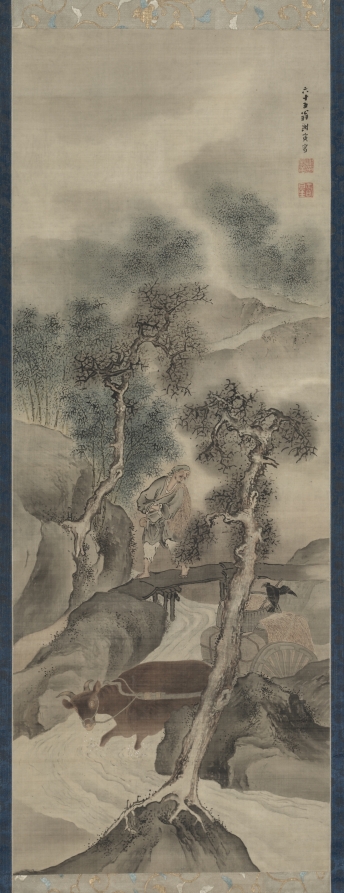| schema:description 9 | "measurements: Overall: 203.2 x 59.2 cm (80 x 23 5/16 in.); Painting only: 130.8 x 46.2 cm (51 1/2 x 18 3/16 in.)" |
| schema:description | "creditline: John L. Severance Fund" |
| schema:description | "wall_description: More celebrated in his lifetime as a poet than as a painter, Yosa Buson is a figure central to Japanese <em>nanga</em>. Literally “southern art,” nanga has its roots in Chinese traditions of literati painting, art produced by scholars who painted for their own sake instead of on commission. Buson drew inspiration from multiple styles of Chinese painting, not just those of literati, and ended up more of a professional painter by the time he had become known as an artist. Like other major nanga figures, he operated outside the main government systems of patronage. Japan’s ruler, the shogun, and regional rulers known as <em>daimyō </em>had official painters who enjoyed special social status. Painters like Buson also found patrons among the merchant class, who often enjoyed greater wealth than that of the upper-class daimyō....(more)" |
| schema:description | "culture: Japan, Edo period (1615-1868)" |
| schema:description | "collection: ASIAN - Hanging scroll" |
| schema:description | "tombstone: Water Buffalo Returning Home, 1781. Yosa Buson (Japanese, 1716-1783). Hanging scroll, ink and light color on silk; overall: 203.2 x 59.2 cm (80 x 23 5/16 in.); painting only: 130.8 x 46.2 cm (51 1/2 x 18 3/16 in.). The Cleveland Museum of Art, John L. Severance Fund 1970.77...(more)" |
| schema:description | "id: 145427" |
| schema:description | "type: Painting" |
| schema:description | "technique: Hanging scroll, ink and light color on silk" |

